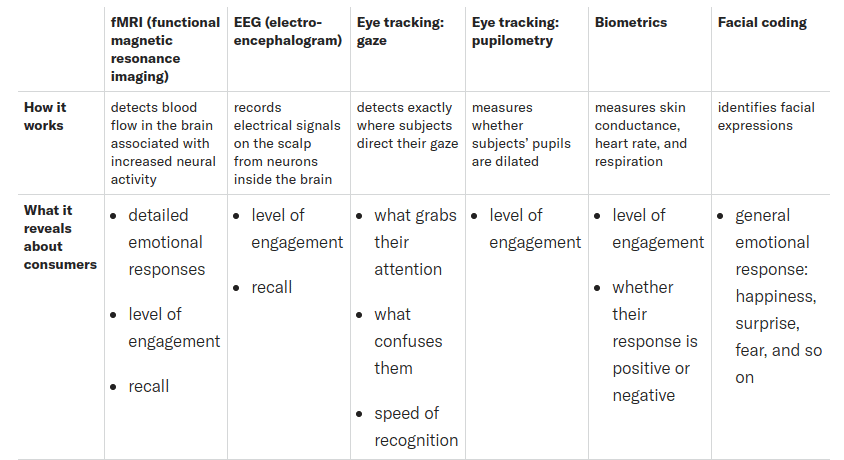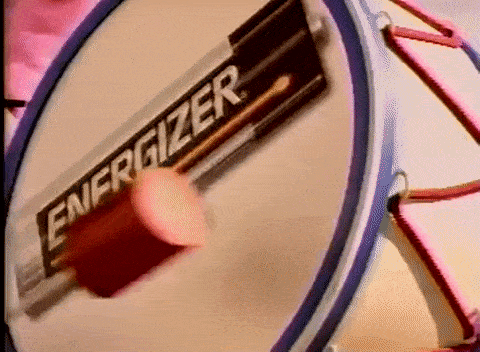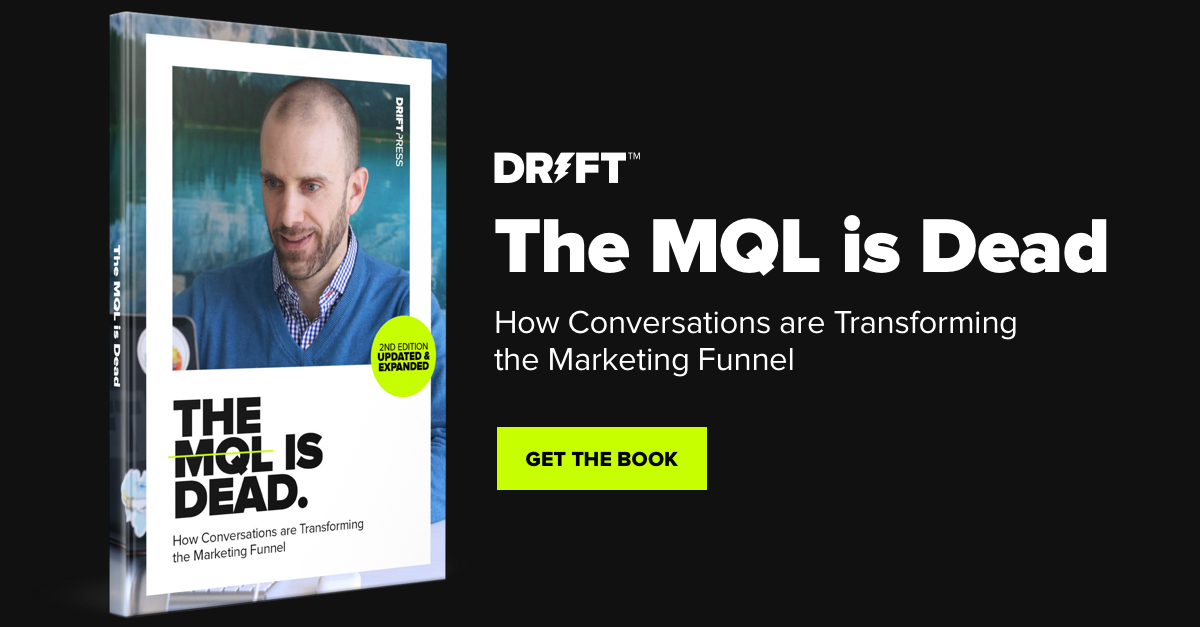50 milliseconds ⏱️
That’s how long it takes for a person to decide whether or not they like your website. 0.05 seconds can make the difference between a visitor bouncing – or becoming a new customer.
These snap decisions made by our brains are complex. In fact, according to author and Harvard professor Gerald Zaltman, 95% of our purchasing decisions are subconscious. Meaning – we’ve made up our minds before we realize we’ve done so. For brands, it also means all that time and money that’s spent focusing on content, advertising materials, logos, and sponsorships are only impacting 5% of our customer’s decision-making process.
So how do we tap into the 95% of the decision-making process? Let me tell you about neuromarketing.
Neuromarketing works by designing and targeting marketing messages to activate something deep inside people’s emotions, consciousness, and more specifically, their primal brain. If done well, it can create warm, fuzzy feelings in their brains and hopefully – turn them into customers.
But here’s the thing. The concept and practice of neuromarketing has only been around for about 20 years, so today it’s underutilized by even some of the most forward-thinking brands. I founded my company, Happy Buying Brain, to help brands build a better marketing blueprint and create more effective campaigns that are deeply rooted in the principles of neuromarketing.
In this piece, we’re looking at:
Let’s put that brainpower to work 🧠
The Primal Brain
To understand the power of neuromarketing, it’s important to first talk about how the brain is structured and how information physically enters the brain. Paul MacLean (a neuroscientist in the 1960s) proposed a model that separates the brain into three distinct parts – the triune brain.
So, starting at the base of the brain you have the reptilian brain, which is the physical brain, responsible for fast, automatic, and reflexive responses (so mainly your fight or flight type of responses). And then ascending upwards from there you have your limbic or mid-brain, which deals with emotions and social situations. Together, the reptilian brain and the limbic brain make the primal brain.
And then finally, you have the more sophisticated thinking and logical part of the brain, which is called the neocortex.
Each part of the brain has different roles in how information physically enters into the brain, how the information is filtered and interpreted, starting from the lower parts and then passing through to the neocortex. So the logical brain is actually the last part of the brain to receive information.
The most important thing to remember about the primal brain is that it acts as a primitive filter or a gateway for information entering the brain.
The impact of understanding how information physically enters the brain means that marketers can create more brain-favorable core-messaging in their content, ads, website, and even in their interactions with buyers.
What Is Neuromarketing
Neuromarketing is how the body and brain respond to marketing stimuli.
Neuromarketing is where content like websites, logos, and social media material is designed to evoke an emotional reaction in a person’s brain. Using neuromarketing, it’s easier for brands to understand what their customers’ feelings are – and what drives them to make a purchase.
If brands have these insights, they can then be used to make future marketing efforts even more appealing to the hopes, emotions, and desires – tapping into that 95% of their subconscious.
And it’s already happening. Companies like Time Warner and NBC have been using neuromarketing for years to measure their customer’s engagement, while other tech giants like Microsoft, Google, and Facebook have recently formed their own neuroscience centers to study marketing.
The thing is, these reactions in the brain aren’t easy to measure. Neuromarketing involves brain imaging and scanning to see how people respond to products, pricing, packaging, and advertising. However, using these methods, neuromarketing can uncover something fascinating: the customer is subconsciously reacting to your brand in ways that will have a big influence on their decision to buy from you that their conscious mind is totally unaware of.
If this all sounds mind-blowing and complex – that’s because it is 🤯
Neuromarketing uses two methods to track brain activity: functional magnetic resonance imaging (fMRI) and electroencephalography (EEG).

Image Source
fMRI uses magnets to monitor the brain’s blood flow, while people are given visual and audio cues. When this happens, an examiner checks the brain’s “pleasure center” to see how the person is reacting to each cue. EEG, on the other hand, tracks the brain’s electrical activities through electrodes attached to the scalp to measure engagement.
Although these methods, especially fMRI, are quite expensive (running an fMRI machine can cost up to $1000/hour 😳), some neuromarketing agencies are trying to make it more affordable. Harvard Business Review’s Eben Harrell says several start-ups in Silicon Valley are actively working to make brain imaging more nimble and less costly.
How Brain Activity Drives Consumer Behavior
The goal of neuromarketing is to get a deeper understanding of consumer behavior.
Companies want to see how the emotions and memories associated with their brands are impacting a person’s buying decision-making process at an unconscious level. Nobel Laureate Francis Crick explains it as the idea that all human feelings, thoughts, and actions – even consciousness itself – are just the products of neural activity in the brain. To see what our brains are thinking and feeling, neuromarketing:
👀 Tracks eye movement to see what grabs attention
❤️ Uses EEG brain imaging to gauge emotional responses (i.e. happy responses to advertisements or product features)
🤩 Looks at fMRI scans to see what ads, visuals, and features of a product generate the most activity in certain areas of the brain associated with specific emotions towards the brand
Doing all this helps tap into a customer’s subconscious responses and makes it easier for companies to adapt marketing techniques to their customer’s thoughts and feelings.
Pepsi used these techniques when its offshoot company, Frito-Lay, was looking for ways to better tap into its female audience. At the time, their chips were packed in shiny bags, which were setting off a part of their female customer’s brains that sparked feelings of guilt. It was because of this subconscious reaction to the chips that Frito-Lay’s female customers were hesitant to eat the chips.

The new (left) and old (right) Frito Lay packing
So, Frito-Lay changed up their packaging and started selling their chips in matte-style finish bags. Instead of feeling guilt, female customers started having positive reactions with the chips and the brand in general.
The final result? A significant increase in their sales 🔥
7 Primal Brain-Friendly Messaging Components Used in Neuromarketing
1. Novel Pattern Interruption
The first technique I’m going to show you is pattern interruption. Its main aim is to change a particular thought, behavior, or situation in your brain.
The average human has between 12,000 to 60,000 thoughts per day, yet 95% of them are repeats. All that repetition means we’re thinking the same things each day without leaving much space for new thinking, ideas, thoughts, and behaviors.
Pattern interruption can change this. Energizer does this well with its Energizer bunny 🐰
That pink bunny has used a repetition technique in Energizer advertisements for more than 30 years to remind customers that its product “keeps going and going…”

However, the company has also found innovative ways to create novelty and pattern interruption in their advertisements. Take a look at this ad:
It sticks with the repetition motto (that the battery is going to keep going) and then adds in that the bunny runs even longer with the help of carrots to break up the repetition.
2. Visuals
Images, text, and video are the glue that holds a marketing campaign together – and customers are quick to judge.
Research shows people make subconscious judgments within 0.05 seconds of seeing something, whether it’s a person or a product – that’s 10 times faster than the average eye blink 😮
The interesting part is up to 90% of that judgment is based on colors. Fonts matter, too. The University of Michigan found that “simple” fonts are easier to win customers over.
Let’s use Sephora as an example of this.

The beauty company uses big, clear, and vibrant images in their marketing materials. The bold and straightforward campaign tells customers that the brand is all about beauty, acceptance, transformation, and self-confidence 💪
3. Safety
How people view your brand obviously matters, a lot.
Safety comes in the form of social proof. If customers are leaving good ratings and reviews for your company, it’s going to trigger an important reaction in their brain – safety. Safety breeds trust in your brand, which ultimately makes a customer feel more comfortable in buying stuff from you.
The perfect example of a company using safety messaging is Amazon. Every product for sale on the website has a rating and social proof like reviews to help customers make a buying decision. Take this TV:

It has 2,258 reviews, a 4.5/5 star rating, and has been awarded an “Amazon’s Choice” badge. It’s pretty clear that this product is safe to buy ✅
4. Speed
Neuromarketing is very useful for detecting customer trends.
Speed is one of those trends that consumers are really looking for these days. In our fast-paced world, we want our online purchases delivered quicker, and those payments processed faster. When PayPal did a study on what mattered most to their customers, it showed their customer’s brains reacting more to convenience than security. So rather than pushing a security message, PayPal used this study to show how quickly it could process payments for customers instead.
Drift does this, too. Its chatbots give customers instant, reliable customer service.

Customers are given instant gratification, which is essential in a society where customers expect things right away. Drift’s automated responses are easy to follow, with one-click reply options that make interacting with the chatbot quick and frictionless.
Drift Pro Tip: The chances of booking a meeting increase by almost 6X if you reach out to an account within one hour of them landing on your website. Learn more here.
5. Simplicity
In neuromarketing, we like to go with the “less is more” approach.
Giving your customers too many options can lead to decision paralysis. As behavioral scientist Dan Ariely famously mused in his TED Talk, as people, we don’t know what we want, and figuring out our preferences is very hard.
“If I ask you, “What is the best place to eat?” you have many choices. These are hard questions with lots of possible answers.”
A Columbia University study proved Ariely’s point; giving customers too many options is a bad path to go down. The more options that were offered to customers, the less likely the customers were to make a purchase.
Stick to simple offers when marketing to your customers. The best example of simplicity is Google.

See what I mean? They offer people one option – a search bar.
6. Tangible
Appealing to someone’s five main senses can trigger their brain into wanting to touch and physically engage with your product.
Our brains are constantly scanning everything our eyes see. We’re looking for anything familiar, friendly, and recognizable. If we see a picture of a can of Coca-Cola, it can set off our taste buds (if we’re familiar with the taste, of course).
Take UpNature as an example. The company sells essential oils, but it uses images of lemons, limes, and oranges to activate the taste sense. These images stimulate their customer’s salivary glands to make the mouth water.

The ultimate goal here is for UpNature to use this connection as a way for their customers to be triggered when they see their brand. This is crucial because when people think of essential oils, the first thought that comes into their brain isn’t how tasty they are! But UpNature wants to change this by associating their brand with the mouth-watering effect that comes from citrus fruits.
7. Authority
Finally, let’s talk about authority.
Yes, it’s the oldest trick in the marketing book. But it’s still a super important part of neuromarketing as authority greatly influences a customer in their decision-making process. Customers trust authority opinions to save them from doing the hard work of searching through reviews and asking their friends if a product is worth buying.
One of my favorite examples of a company using authority to target decision-makers is Basecamp.

They use website testimonials from well-known clients like Shopify, NASA, and 3M to establish authority and build instant trust with their customers.
3 Ways to Get Started with Neuromarketing
If you want to dip your toes into the world of neuromarketing, here are my three tips for getting started.
1. Join the Community 👋
First, get involved with the neuromarketing community. There are several groups you can join to learn more about how it can help your brand. To start with, you can:
- Connect with me on LinkedIn
- Read some more material I’ve written over on the Happy Buying Brain blog
- Join Facebook groups like Neuromarketing & Neurobusiness and Neuromarketing Experience and see what neuromarketers are talking about
2. Make Time to Read 📚
Next, get reading. There are tons of awesome books that explain the psychology and influence of neuromarketing better than any blog post can. My two top picks are Robert Cialdini’s Influence: The Psychology of Persuasion and Daniel Kahneman’s Thinking, Fast and Slow.
3. Study Up 🤓
Finally, get studying. Courses are one of the best resources marketers can use to learn the skills needed to use neuromarketing in their own companies. My top picks? The Applied Neuromarketing course from the folks over at CXL, as well as the beginner neuromarketing courses offered by Coursera.
Remember – neuromarketing can help your brand by targeting your customers and their behaviors in a way that hits them right in the feels. It goes beyond flashy ad campaigns and bold logos; it targets their cognitive and emotional thoughts, feelings, and fears that reside in their primal brain.
The only thing stopping you from using neuromarketing to build a modern marketing campaign is learning more about it – so use this post as a jumping-off point.
Felix Cao is the founder of Happy Buying Brain.
It’s time to treat buyers like people – not leads. Learn how conversations are transforming the marketing funnel as we know it (and what you can do about it).
Editor’s Note: This article was published in July 2020 and has been updated to reflect new information.









